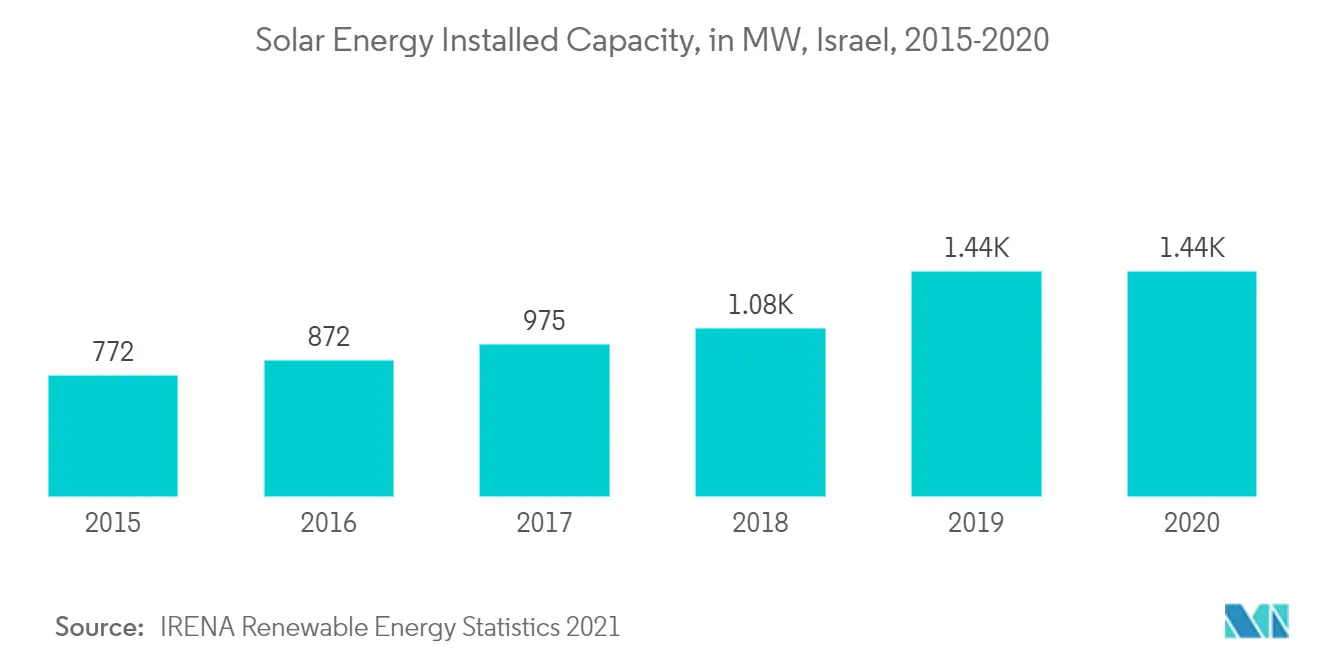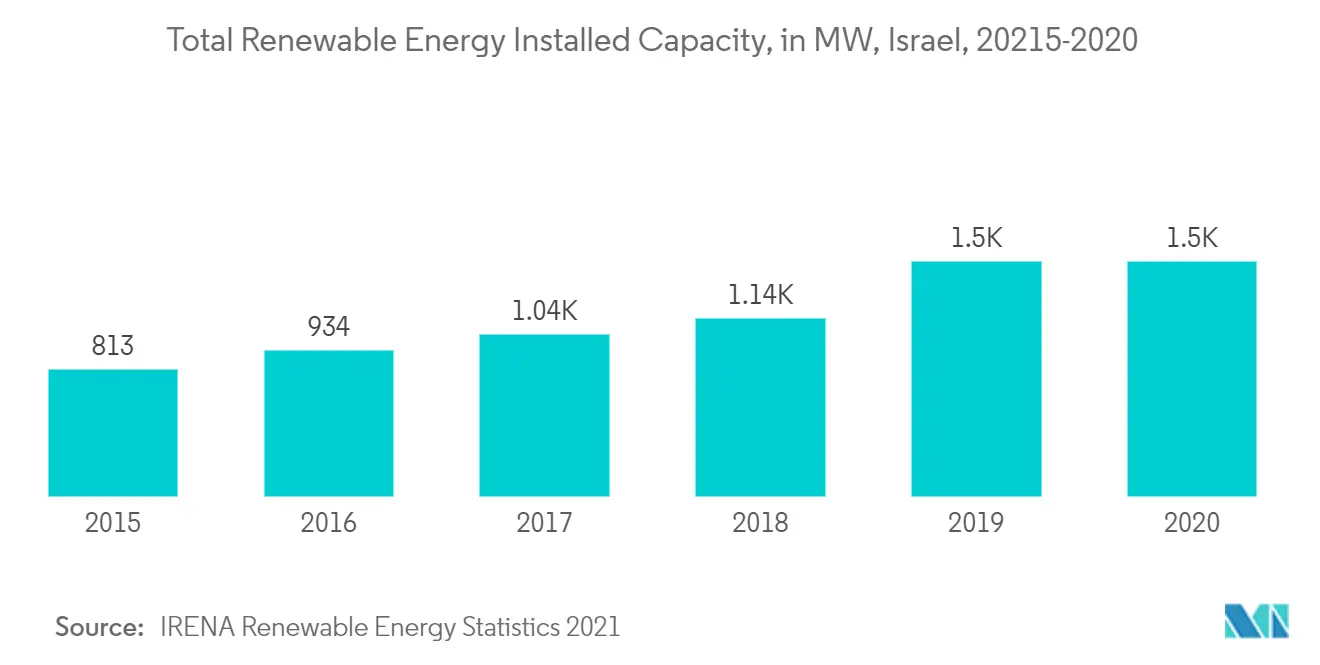Market Trends of Israel Renewable Energy Industry
This section covers the major market trends shaping the Israel Renewable Energy Market according to our research experts:
Solar Energy to Dominate the Market
- Solar energy is one of the major sources of renewable energy in Israel. The demand for electricity is expected to increase due to the expected increase in the Israel population.
- In 2020, approximately 7% of the energy generated in the country was from solar energy. The Israeli government has planned to increase its renewable energy generation to 30% of the total energy generation by 2030.
- In 2020, the electricity generation from solar energy was 1.44 GW. The electricity generated from solar energy accounts for 90% of the total renewable energy in Israel. This is further expected to increase with the ongoing and upcoming solar projects.
- In January 2021, Israel's Electricity Authority allocated 608.95 MW of solar projects to seven bidders in the country. The companies included were Doral Renewable Energy Resources Group (200 MW), SolGreen (95.6 MW), EDF Renewable Energy Israel won 90 MW, and Enlight Renewable Energy bagged 82 MW of solar projects.
- In December 2021, the Ministry of Finance of Israel had awarded tenders for 814 MW of solar projects. The companies included were Prime Energy secured around 475 MW of the allocated capacity, followed by Doral Energy (100 MW), Zabar Solar (65 MW), YVS Renewable Energy (50 MW), Enlight Energy (30 MW), and EDF Renewables (32 MW).
- In December 2021, Shikun & Binui was selected to build and operate a 300 MW solar project in Dimona, including a 210 MWh energy storage component, and the tender for the project had a final price of ILS8.58c/kWh (USD2.7c/kWh).
- Hence, owing to the above points, the increasing solar energy installations are expected to drive the Israeli renewable energy market during the forecast period.

Upcoming Renewable Energy Projects Driving the Market Demand
- Israel is shifting toward renewable energy utilizing sources such as solar radiation, wind power, biomass, and additional non-fossil energy sources. Renewable sources will enable continuous, long-term, environmentally friendly power generation to meet the country's energy demand.
- To reduce the air pollution and national carbon footprint emitted from the energy sector, Israel has led to the adoption of clean energy sources, which gained prominence, and is further expected to draw the attention of investors toward renewable energy sources.
- In October 2020, the government approved a plan to add 15 GW of solar energy capacity to raise the share of renewable power generation from 17% to 30% by 2030. Solar energy accounted for 7% of the country's installed capacity, with 1.4 GW by the end of 2020.
- In December 2021, the United States Department of Energy (DOE) and Israel's Ministry of Energy (MoE), along with the Israel Innovation Authority, announced the six clean energy projects selected to receive USD 5.48 million in government funding through the Binational Industrial Research and Development (BIRD) Energy program.
- In January 2022, Israel's Ministry of Defence has signed a deal with Energix Renewable Energies Ltd for the installation of up to 41 wind turbines in northern Golan Heights to ensure the supply of green electricity to tens of thousands of households in the country.
- Therefore, owing to the above points, the demand for clean energy sources is likely to drive the Israeli renewable energy market during the forecast period.

